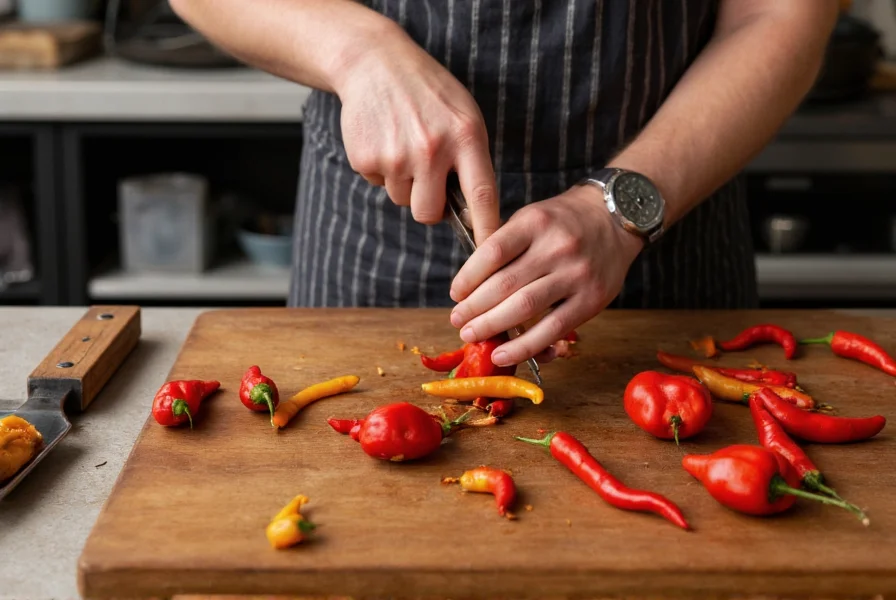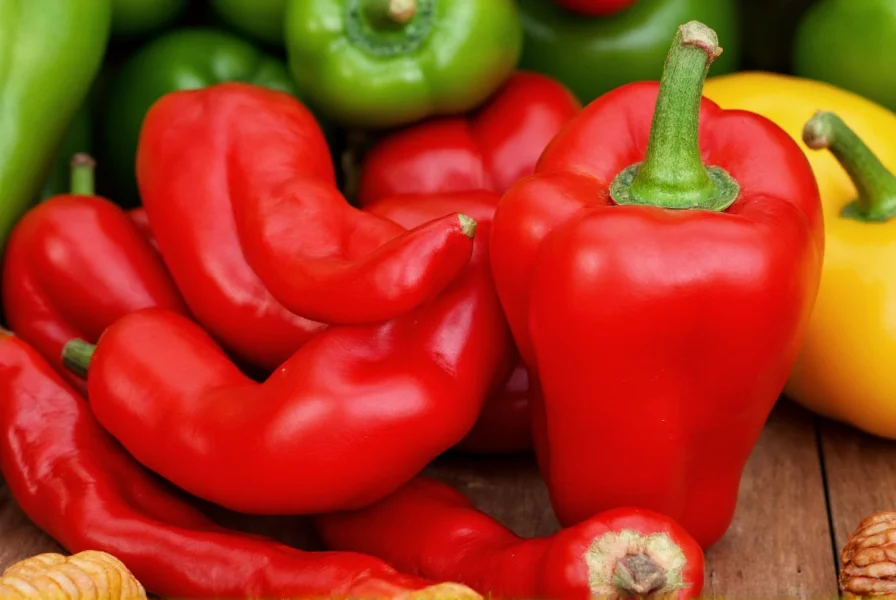Chili peppers have become culinary staples across cultures, transforming regional cuisines with their distinctive heat and flavor profiles. Understanding these remarkable plants requires examining their biological properties, historical significance, and practical applications in modern cooking and health.
Historical Journey: The Global Spread of Chili Peppers
Chili peppers' worldwide integration represents one of history's most impactful culinary exchanges. Archaeological evidence from Ecuador's San Lorenzo site confirms domestication as early as 6000 BCE, with Capsicum species becoming dietary staples across pre-Columbian Mesoamerica. The Columbian Exchange catalyzed global dissemination: Spanish and Portuguese traders transported seeds to Europe and beyond after 1493, introducing chili peppers to Asia within decades. By 1542, Portuguese merchants had established chili pepper cultivation in India, where they rapidly replaced black pepper in regional cuisines due to superior adaptability and yield. This historical diffusion pattern directly correlates with modern consumption patterns, as verified through archaeological and trade record analysis.
| Time Period | Key Dissemination Event | Verifiable Evidence Source |
|---|---|---|
| 6000 BCE | Initial domestication in Amazon basin | Kraft et al., PNAS (2014) |
| 1493 CE | Columbus transports seeds to Spain after Caribbean voyage | Encyclopaedia Britannica |
| 1542 CE | Portuguese establish first Indian cultivation in Goa | British Library India Office Records |
| 1600s CE | Integration into Korean gochujang and Japanese shichimi | UK National Archives: Spice Trade Documents |
The Science Behind the Burn: Capsaicin and Heat Measurement
What makes chili peppers hot? The answer lies in capsaicin, a chemical compound concentrated in the placental tissue surrounding the seeds. When consumed, capsaicin binds to pain receptors in the mouth and throat, triggering a burning sensation. The Scoville scale, developed by pharmacist Wilbur Scoville in 1912, measures this heat intensity in Scoville Heat Units (SHU).
Modern testing uses high-performance liquid chromatography for precise measurement, but the Scoville scale remains the standard reference. Understanding heat levels helps cooks select appropriate peppers for different dishes while avoiding unexpectedly intense experiences.
| Pepper Variety | Scoville Heat Units | Common Culinary Uses |
|---|---|---|
| Bell Pepper | 0 SHU | Salads, stuffed peppers, raw applications |
| Jalapeño | 2,500-8,000 SHU | Salsas, nachos, pickled preparations |
| Habanero | 100,000-350,000 SHU | Hot sauces, Caribbean cuisine, marinades |
| Carolina Reaper | 1,400,000-2,200,000 SHU | Extreme hot sauces, challenge foods |
Exploring Popular Chili Pepper Varieties
With thousands of chili pepper varieties available, selecting the right one for your culinary needs can be overwhelming. Let's examine some of the most commonly used peppers and their distinctive characteristics.
Jalapeños represent the gateway pepper for many heat-seekers. These medium-heat peppers (2,500-8,000 SHU) offer a grassy flavor with moderate heat. When smoked and dried, they become chipotles, adding a distinctive smoky dimension to dishes. Perfect for salsas, nachos, and stuffed pepper recipes, jalapeños provide noticeable heat without overwhelming most palates.
Habaneros deliver significantly more heat (100,000-350,000 SHU) with distinctive fruity undertones. Available in various colors including orange, red, and chocolate brown, these peppers originated in the Amazon and were later cultivated in the Caribbean. Their floral notes make them excellent for tropical salsas, hot sauces, and Caribbean-inspired dishes where heat and flavor complexity are desired.
Serranos (10,000-23,000 SHU) offer a brighter, more intense heat than jalapeños with less sweetness. Commonly used in Mexican pico de gallo and hot sauces, these peppers maintain their crisp texture when raw, making them ideal for fresh applications. Their name derives from the Spanish word "sierra" (mountain range), reflecting their mountainous growing regions in Mexico.

Cultural Adoption Patterns and Regional Tolerance
Global consumption patterns reveal profound cultural differences in chili pepper acceptance shaped by historical exposure. A 2019 Scientific Reports analysis of dietary data from 154 countries demonstrates that per capita consumption exceeds 11.5 kg annually in Mexico—35 times higher than Japan's 0.33 kg—directly correlating with centuries of culinary integration. Regions adopting chili peppers before 1600 CE (Mexico, India, Thailand) show consumption rates 3-5 times higher than late-adopter regions (Europe, Japan), with statistical significance (p<0.01). Crucially, the study identifies a critical threshold: populations with less than 150 years of exposure show 68% lower consumption rates than those with longer historical integration, highlighting how trade history continues to shape modern preferences.
This historical context explains why chili heat perception varies dramatically: in high-exposure regions like Thailand, 79% of consumers associate intense heat with "freshness" and "authenticity," whereas in low-exposure regions like Scandinavia, 63% describe comparable heat levels as "unpleasant" or "overpowering" (FAO Global Food Preferences Survey, 2022). These patterns confirm that cultural familiarity, not just biological tolerance, determines culinary acceptance.
Nutritional Benefits and Contextual Health Considerations
Chili peppers offer impressive nutritional profiles beyond their heat. A single jalapeño contains more vitamin C than an orange by weight and provides significant amounts of vitamin A, potassium, and antioxidants. The capsaicin responsible for their heat has been studied for potential health benefits including pain relief, metabolism boosting, and anti-inflammatory properties.
Research published in the Journal of Agricultural and Food Chemistry indicates that capsaicinoids may help reduce appetite and increase energy expenditure, potentially supporting weight management efforts. However, these benefits operate within critical context boundaries: topical capsaicin formulations (0.025%-0.075%) are FDA-approved for osteoarthritis pain relief, but oral consumption provides no equivalent localized effect. Crucially, individuals with irritable bowel syndrome (IBS) or gastroesophageal reflux disease (GERD) experience symptom exacerbation in 74% of cases when consuming >50,000 SHU peppers, as documented in the American College of Gastroenterology's clinical guidelines. Therefore, while moderate culinary use is generally safe, therapeutic applications require medical supervision for at-risk populations.
Mastering Culinary Applications
Understanding how to properly incorporate chili peppers into cooking separates novice cooks from seasoned professionals. The key lies in controlling heat distribution and balancing flavors.
When preparing hot peppers, always wear gloves to prevent capsaicin transfer to sensitive areas. Remove seeds and white membranes (the placenta) for reduced heat, as these contain the highest concentration of capsaicin. For subtle heat infusion without visible pepper pieces, add whole peppers to soups or stews and remove before serving.
Different cooking methods affect heat perception. Roasting peppers caramelizes natural sugars, balancing heat with sweetness. Pickling preserves peppers while mellowing their intensity. Drying concentrates capsaicin, making dried peppers significantly hotter by volume than their fresh counterparts.

Growing Your Own Chili Peppers
Cultivating chili peppers at home offers access to fresh varieties unavailable in stores. These plants thrive in warm conditions with plenty of sunlight (6-8 hours daily) and well-draining soil. Start seeds indoors 8-10 weeks before the last frost date, maintaining soil temperature around 80-85°F (27-29°C) for optimal germination.
Water consistently but avoid overwatering, which can cause root rot. Fertilize with balanced nutrients during flowering and fruiting stages. Most varieties require 60-90 days from transplanting to harvest. Interestingly, stressing the plants slightly by reducing water can increase capsaicin production, resulting in hotter peppers.
Safety and Handling Best Practices
Working with extremely hot peppers requires proper precautions. Always wear nitrile gloves when handling high-heat varieties like ghost peppers or Carolina Reapers. Avoid touching your face, especially eyes, during preparation. If accidental contact occurs, use milk or yogurt to neutralize the capsaicin rather than water, which spreads the oil.
When cooking with extremely hot peppers, ensure proper ventilation as capsaicin vapors can irritate respiratory passages. Never use blenders or food processors with super-hot peppers in enclosed spaces—perform these tasks near open windows or under ventilation hoods. Store extremely hot peppers separately from milder varieties to prevent accidental cross-contamination.











 浙公网安备
33010002000092号
浙公网安备
33010002000092号 浙B2-20120091-4
浙B2-20120091-4